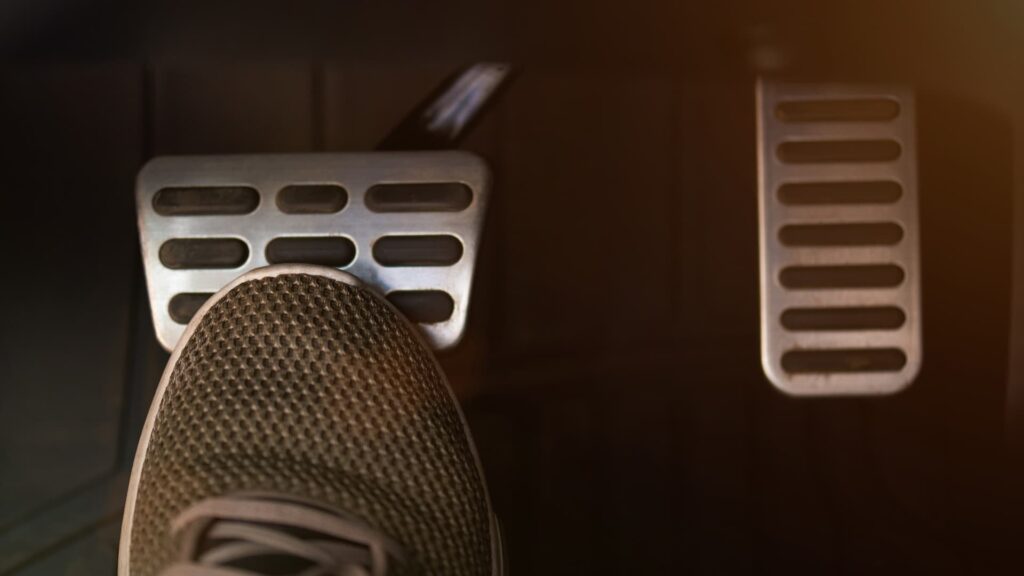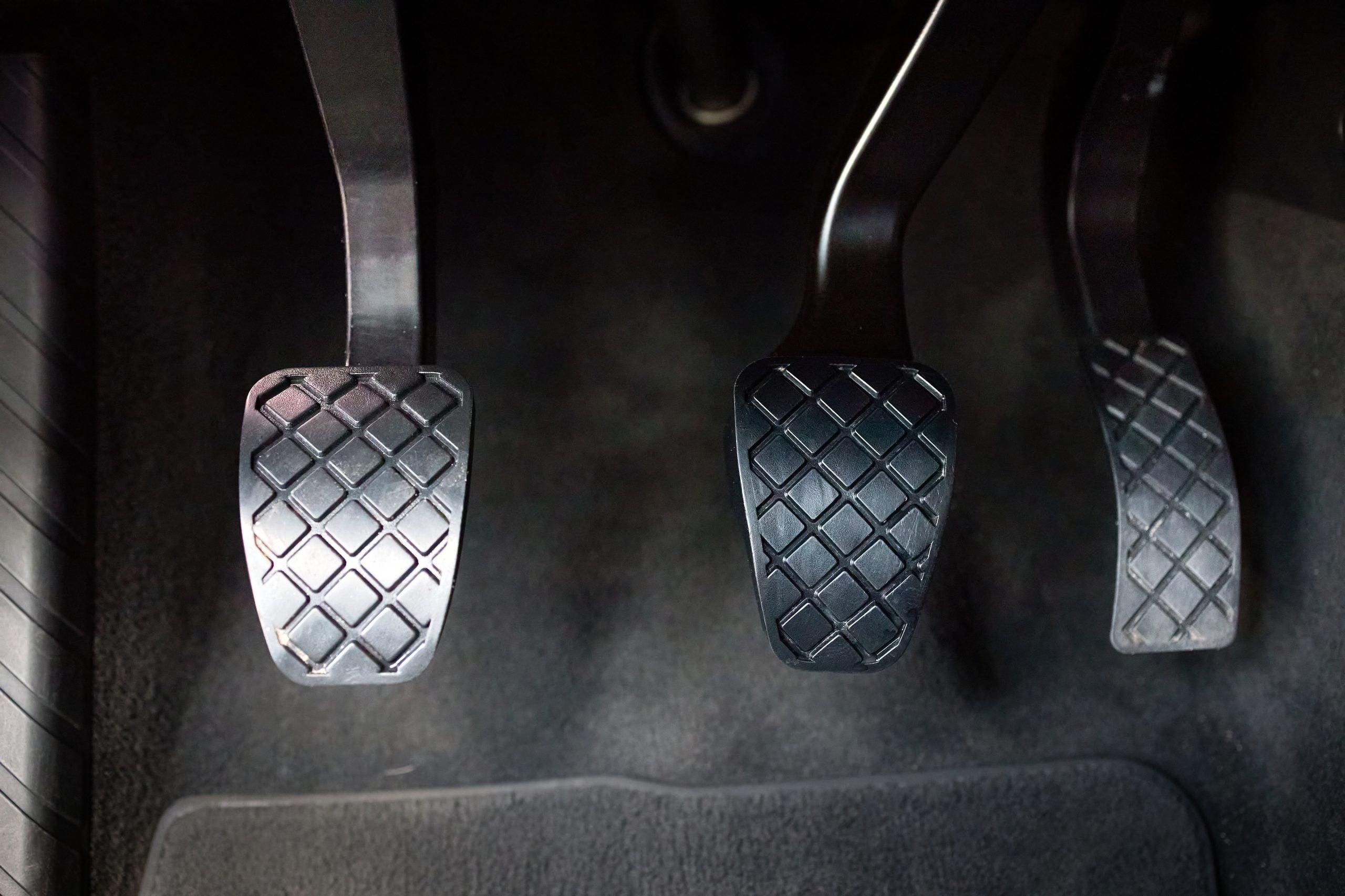Last updated on December 27th, 2023 at 11:12 am
Starting a vehicle with a manual transmission can sometimes be a daunting task, especially for those who are new to driving. One important aspect of starting a vehicle with a manual transmission is properly depressing the brake pedal before attempting to start the engine. In this article, we will provide a step-by-step guide on how to depress brake pedal to start engine of a vehicle.
Whether you are a beginner driver or an experienced pro, this guide will help you start your vehicle safely and confidently.
Depress Brake Pedal To Start Engine Mean
To “depress the brake pedal to start the engine” means that you need to press down on the brake pedal with your foot before you can turn the ignition key to start the engine. This is a safety measure that is used in vehicles with manual transmissions, as it helps to prevent the vehicle from rolling or moving while the engine is being started.
When you depress the brake pedal, it activates the brake system and applies pressure to the brake pads, which in turn causes the vehicle to come to a stop.
By keeping your foot on the brake pedal while starting the engine, you are able to keep the vehicle stationary and in control, even if the engine starts up while the vehicle is in gear.
Guide on how to depress the brake pedal
Manual Transmission
Here is a step-by-step guide on how to depress the brake pedal correctly in order to start the engine of a vehicle with a manual transmission:
- Sit in the driver’s seat and put on your seatbelt.
- With your left foot, press down on the clutch pedal and hold it in place. The clutch pedal is usually the one on the far left.
- With your right foot, press down on the brake pedal. The brake pedal is usually the one on the far right.
- With your right hand, turn the ignition key to the “on” position. This is usually done by turning the key clockwise.
- Check that the gear shift is in neutral by moving it up and down. It should not be in any specific gear position.
- While keeping your foot on the brake pedal, slowly release the clutch pedal with your left foot.
- The engine should now start. If it does not, try repeating the process and make sure that the gear shift is in neutral and the ignition key is turned to the “on” position.
- Once the engine has started, you can release the brake pedal and begin driving as normal.
Remember to always keep your foot on the brake pedal until the engine has started and you are ready to begin driving. This will help to keep the vehicle stationary and in control, and will help to prevent accidents or injuries
Automatic Transmission
In a car with an automatic transmission and a push-start ignition, starting the engine is pretty simple. Here’s what you do:
First things first, take a seat in the driver’s spot and buckle up your seatbelt.
Make sure your gearshift is in the “park” position (you’ll usually see a P on the gear indicator).
Next, step on the brake pedal to put on the brakes. It’s an important step.
Now, find the “start” button. It’s typically on the dashboard or in the center console area.
Press and hold that “start” button. In a few moments, the engine should come to life.
Once the engine is running, you can let go of the “start” button.
Remember, if the engine doesn’t start when you press the button, double-check two things: First, ensure the gearshift is in “park,” and second, make sure you’re pressing the brake pedal. These two need to be in place for the push-start system to do its job.
So, in a nutshell, buckle up, gear in “park,” foot on the brake, press and hold the start button, and you’re good to go! If there’s any hiccup, just check park and the brake pedal—it’s usually one of those.
Why Are the Brake Pedals Harder to Press

There are several reasons why brake pedals may feel harder to press than usual:
Brake fluid level: The brake fluid level in your vehicle should be checked regularly to ensure that it is at the correct level. If the brake fluid level is too low, the brake pedal may feel harder to press as the brakes may not be functioning properly.
Brake pads: If the brake pads on your vehicle are worn or damaged, the brake pedal may feel harder to press as the brakes may not be working as effectively.
Brake booster: The brake booster is a device that helps to amplify the force applied to the brake pedal, making it easier to press. If the brake booster is not functioning properly, the brake pedal may feel harder to press.
Hydraulic system: The hydraulic system in your vehicle’s brake system is responsible for transmitting the force applied to the brake pedal to the brake pads. If there is a problem with the hydraulic system, the brake pedal may feel harder to press.
If you are experiencing difficulty pressing the brake pedal, it is important to have the issue checked by a mechanic as soon as possible. Brake problems can be serious and can affect the safety of your vehicle.
Recommended Post Ultimate Guide: How Many Brake Pads per Wheel?
FAQS
Q: Why do I need to press the brake pedal to start the engine?
A: In most modern vehicles, the brake pedal must be pressed when starting the engine as a safety precaution. This helps prevent the car from accidentally rolling or moving when the engine is started.
Q: Can I start the engine without pressing the brake pedal?
A: It is generally not recommended to try to start the engine without pressing the brake pedal. This can cause problems with the car’s safety systems and may lead to accidents or injuries.
Q: What if I can’t press the brake pedal due to a physical disability?
A: If you have a physical disability that prevents you from pressing the brake pedal, you may be able to get a modification to your vehicle that allows you to start the engine in a different way. Some options include using a hand-controlled brake or a brake pedal extender.
It’s best to consult with a mechanic or an adaptive driving specialist to determine the best solution for your specific needs.
Q: Can I start the engine with my foot off the brake pedal?
A: It is generally recommended to keep your foot on the brake pedal when starting the engine. This helps ensure that the car stays stationary and doesn’t roll or move. If you need to start the engine with your foot off the brake pedal, make sure the car is in park and the emergency brake is engaged.
Q: Is it okay to press the accelerator pedal when starting the engine?
A: No, it is not okay to press the accelerator pedal when starting the engine. This can cause the engine to rev up excessively and may lead to damage. Instead, make sure the accelerator pedal is not pressed when starting the engine.
Q: Can I start the engine with the gearshift in any position?
A: No, you should not start the engine with the gearshift in any position other than park or neutral. Starting the engine in any other gear can cause the car to lurch or move unexpectedly, which can be dangerous.
Q: Is it safe to drive a car with a brake pedal that is hard to press?
A: It is not safe to drive a car with a brake pedal that is hard to press. This can make it difficult to stop the car in an emergency, and could increase the risk of an accident.
If you are experiencing difficulty pressing the brake pedal, you should have the brake system checked by a mechanic as soon as possible. Do not drive the car until the issue has been resolved.
CONCLUSION
I hope this information was helpful and that it helps you address any issues you may be experiencing with your brake pedal. Remember, it is important to address any issues with your vehicle’s brake system as soon as possible in order to ensure the safety and reliability of your car. If you have any further questions or concerns, don’t hesitate to reach out for additional assistance.
FOLLOW US
